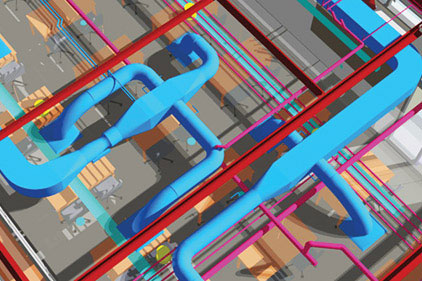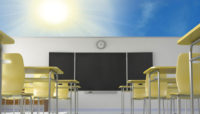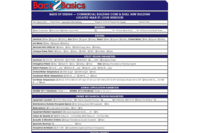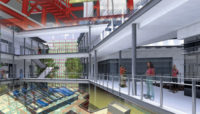At some point in time, most school building committees are given the responsibility to establish building programs to expand their city or town school systems by adding new school buildings. When ready, a Building Program (BP) is created, and this document will be the cornerstone for investing in an HVAC design and eventual construction of HVAC systems to meet the BP requirements.
For the HVAC engineer, he will take the program information and craft a Basis of Design (BofD) using the suggested BofD template on page 2 of this B2B. For this month’s test, we will document the BP for a new kindergarten through middle school building in Killeen, TX. On page 2 of this B2B, the reader shall complete the BofD by checking the correct boxes from the multiple choice selections based on the BP information provided and from pertinent reference documents, such as local weather data design criteria for this city. The answers to the BofD can be found here..
The new building will be an 80,000-sq-ft, one-story structure including a multi-use gymnasium. The building will require a special security system that will be integrated with the HVAC system for smoke control, as well as TV cameras at strategic locations. Utilities will be brought into the building to provide electricity, gas, and the city water.
Electrical, plumbing, fire protection, and security consultants will work in sync with the HVAC design team to provide a complete mechanical-electrical installation and shall be per state and local codes.
The HVAC electrical requirements shall be 120/1/60 for motors less than .5 hp and 480/3/60 for motors .5 hp and larger. The gas shall serve a new 4,300 MBH condensing hot water boiler providing hot water heating to the individual room fan coil units and to VAV terminals, as well as the domestic hot water heat. The HVAC central air systems shall be direct outside air systems with energy recovery from the various exhaust systems to provide ventilation to each space. Each room shall be capable of automatically and/or manually being commanded to unoccupied mode along with a morning warm-up and morning cool-down sequences of operation. A central AHU will have enthalpy airside economizer, with direct expansion cooling and MERV 8 pre-filters and MERV 14 final filters.
Fan motors shall be VFD fans to provide supply air VAV to the building occupied spaces. There is no requirement for standby capacity and no system/equipment spare capacity for BP growth.
The HVAC design of this building renovation shall be based on ASHRAE 2011 Application Handbook chapter 7, Educational Facilities for basis of design requirements. The design engineer will draw upon the ASHRAE Advanced Energy Design Guide for K-12 School Buildings for more specific energy conservation design opportunities.
When beginning to shape the BofD, the engineer should take into account the ASHRAE recommended HVAC system analysis and selection process found in chapter 1 of its 2012 Systems and Equipment Handbook and continue on with the BofD data collection by reviewing chapter 2, Decentralized Cooling and Heating and/or chapter 3, Central Cooling and Heating, to determine the optimum HVAC systems for this BP.
The design engineer, in conjunction with the school building committee and the architect, has finalized the HVAC system to include a closed loop hot water heating system along with individual AHUs with remote air-cooled condensing units for the air-conditioning. The high-efficiency boiler will be located in a boiler room, while the central air systems and their associated exhaust air systems and energy recovery wheels are located on the roof.
The HVAC system could be designed for occupied-unoccupied modes of operation Monday through Friday with manual override on weekends and to accommodate evening classes. Hot water heating system shall have two zones: one zone for year-round domestic hot water heating with a fixed 160ºF HWS, and the second zone for building heat that shall be an outdoor temperature compensated system (160ºF HWS & 120ºF HWR at 26ºF outdoors and shall be off when temperature reach 60ºF. Occupied space shall be maintained at 70ºF with no humidity control in the heating season and 76ºF and a maximum of 60% rh during the air conditioning season. Equipment room and back-of-the-room support areas will be maintained at 68ºF with no humidity control in the heating season and 78ºF and a maximum 65% rh during the air-conditioning season.
There will be a LEED Platinum certification requirement with other specialized energy/environmental program criteria based on ASHRAE recommended school guidelines. The reader is directed to the Facility Files for the Owner’s Building Program Annual Operating Budget and Operating Program.
As the design phase for this BP goes forward, the BofD should be routinely referenced and updated based on changes in the BP, as well on as changes and/or enhancements to the HVAC design.








